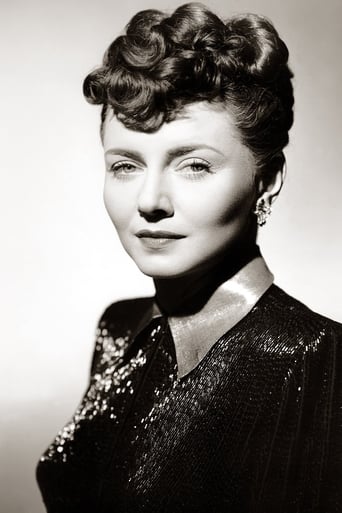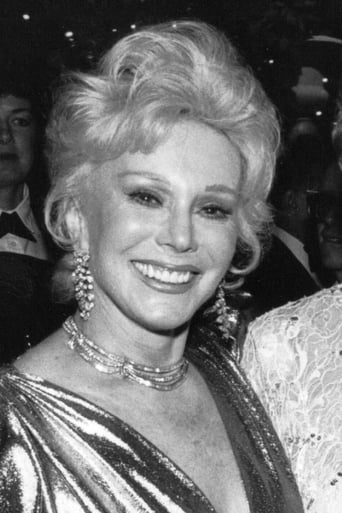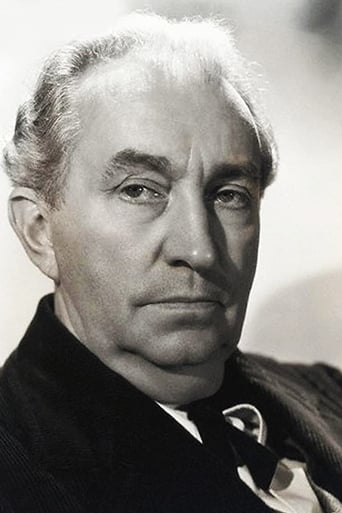Leofwine_draca
THE WIFE OF MONTE CRISTO is a B-movie spin-off stemming from the famous Alexandra Dumas novel. This time around, Edmund Dantes is back in action and battling against his corrupt political enemies, and he's aided in his adventures by his own wife. Lenore Aubert is a lively screen presence and does her own sword fighting, which is fun, but the plot is second-rate and the film is more than a little tedious at times. It's one of those movies that you watch and even mildly enjoy at times, but which leaves absolutely no impression afterwards.
mark.waltz
Oh how that poverty row studio Producers Releasing Corporation tried to rise above its low grade status and make films that could be top of the bill during the golden age of Hollywood. Unlike the Edward Small Monte Cristo films released for United Artists, PRC had smaller budgets and they were often filmed darkly with little attention detail paid towards the script. Their top films were about action, with production design quite above average for a PRC film but still not quite A list. There were few exceptions however, with the films of Edgar G. Ulmer among PRC's shining moments, films that are now considered minor classics. Ullmer had great successes with the John Carradine version of "Bluebeard" and the film nor cult classic "Detour", and for this loosely based follow up to the Monte Cristo films, he almost succeeds in making a fairly decent sequel.The issue here is a very convoluted plot line, not quite focusing on the wife of Monte Cristo Lenore Aubert but splitting the focus between her, her imprisoned husband Martin Kosleck and evil count John Loder who has assumed Monte Cristo's throne of power. The period detail, setting this in the 1830s, seems fairly correct and it is handsome to look at. However the photography is often sometimes darkly shadowed and the prince aren't helpful in showing this looking its best. It does have a great cast of supporting actors, and is filled with action and fortunately absent of any unnecessary comedy. But as promising as it Sseems, the script is at fault for not giving a detailed and easy to follow structure, and often you're having to think back as to what you seen previously to try to put points together of where you are in the film when you realized how confused you are. It's a nice effort however and I do salute Ullmer for adding class to the otherwise Alpha and pathetic Z-grade Studio that was frequently referred to as pretty rotten cinema.
Igenlode Wordsmith
*Spoilers* throughout"The Wife of Monte Cristo" is not a straight re-telling of the classic Dumas story; nor is it precisely a sequel. In one sense, it can be seen as cheerfully cashing-in on the escapist trend for swashbucklers and the recent success of "The Son of Monte Cristo". The plot is very much 'suggested by the characters of' rather than 'adapted from' Dumas, and it wasn't until some way into the film, when the eponymous heroine recounts her husband's history, that I even realized she was intended to be the Pasha's daughter Haydee of the novel - a character all but excised from most adaptations!Initially, this seems to be Dumas recast as a standard 'masked hero' plot, with Dantes operating under the improbable B-movie sobriquet of 'The Avenger' to foil Danglars' profiteering by raiding his deliveries before they reach Paris. It then turns the corner into a different set of clichés when the Count is forced to retire from public view until a certain tell-tale wound received by 'The Avenger' has healed - and the Countess steps in to shield his identity by posing as 'the Avenger' herself while he is known to be absent. Despite the heroine's sparkling fencing display during the opening of the film, what ensues is a duel of wits rather than of blades, with all the rapier-play reserved for the men; but Haydee is as skilled in the salon as in the salle d'armes, and her sex naturally places her all but above suspicion. Unfortunately, there is a spy among their followers' ranks whose presence she fails to suspect...The initial set-up is somewhat formulaic and a little confusing. However, as it becomes more original the film improves, both in its action sequences and in the quality of its dialogue. Despite the title, it's essentially a two-handed piece, with Edmond and Haydee receiving approximately equal importance overall in the plot; and it's all but unique, not only in this genre but in any other, in depicting a hero and heroine who are not only in love with one another from the start but whose marriage never falters throughout the film!Lenore Aubert, in the title role, is both stunning in skirts and convincingly athletic in male attire, while her part is both well-written and well-played: she is no anachronistic superwoman but a competent novice stepping into the breach and learning the hero business 'on the job'. Meanwhile, Martin Kosleck, with his wonderful, utterly distinctive face, makes a febrile, whipcord Monte Cristo who stands out with the clarity of a sword blade amidst the decadent corruption with which he is surrounded - and manages to turn in an effective performance despite the handicap of a plot that keeps him off-screen during the whole central portion of the film. The villains are less memorable, with John Loder chiefly worthy of note as the corrupt Prefect of Police who first woos and then suspects the Countess, and Eva Gabor enjoyable in the minor part of his spoilt and beautiful former mistress - and wife of his business associate.Fortunately, the plot gallops along pretty fast, for it has to be admitted that there are weak patches. The whole role played by the Napoleonic locket seems unnecessary and implausible, and its loss and recovery is all too obviously a plot device. The nominally pivotal plague/medicine plot-line is barely developed beyond an initial excuse for Dantes to be outside the law. The very effective scene where the Count seeks refuge with a loyal follower, only to learn from his hostile daughter that the man has followed Haydee's 'Avenger' to his death, is undermined by the girl's sudden change of heart in the nick of time for no very apparent reason - nor is her role in the scuffle in the loft at all clear. The obligatory final duel is too long, with the Count's much-vaunted skill apparently struggling on the defensive against his opponent. And it is a definite mistake to draw the audience's attention in the closing sequence of the film to the fact that our heroes' escape will inevitably be at the cost of the faithful supporters left behind, if the script-writers cannot then produce any satisfactory solution...The other noticeable thing about the film is that the budget evidently didn't run to scenery - almost every action sequence is shot in the dark, including a "ride-off-into-the-sunset" ending where the hero instead disappears on horseback into a moonless night! By and large the nature of the action is such as to make this device seem natural enough, but by the end of the film there were knowing chuckles in the audience as yet another pitch black sequence showed up."The Wife of Monte Cristo" has no more pretensions towards greatness than your average holiday 'franchise movie' of today, and those involved would no doubt be amazed to see it back on the screen some sixty years later. But it's not without intelligence and charm, even if the plot sometimes visibly limps and the dialogue is not up to "Son of Monte Cristo" standard, let alone "Scaramouche". As a twist on the swashbuckler genre, it holds a certain interest. And Edmond and Haydee are well matched: 'the couple that epée together, stay together...' :-)




